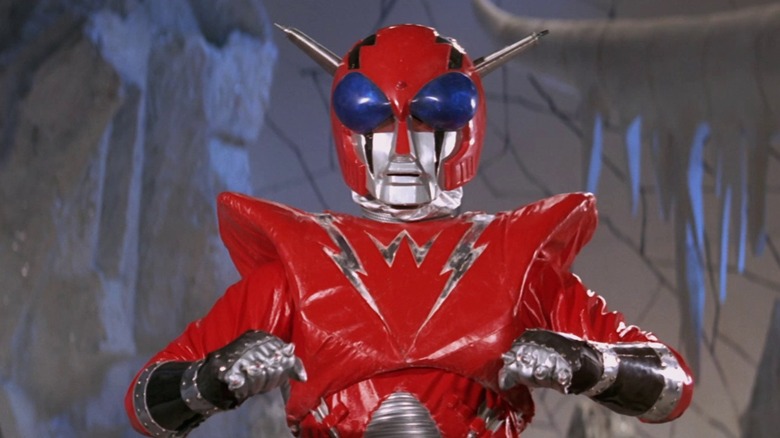The '70s Roger Ebert Guilty Pleasure He Hailed As A 'Berserk Masterpiece'
A common misconception of Roger Ebert is that he only liked highbrow movies. After all, the legendary critic boasted a strong distaste for most slasher films, often dismissing them as dead-teenager pictures. Ebert also viciously trashed the Kurt Russell-starring sci-fi classic "Stargate," even though it's an entertaining hoot. Don't let those reviews fool you, though, as Ebert had guilty pleasures just like the rest of us, one of which is as mindless and silly as they come — "The Super Infra-Man" (also known as "The Super Inframan" or "Infra-Man").
Produced by the legendary Shaw Brothers Studio (which is mostly synonymous with great martial arts flicks), "Infra-Man" is a '70s Hong Kong take on the Japanese tokusatsu craze that was popular at the time thanks to "Kamen Rider" and "Ultraman." The story centers around Lei Man (Danny Lee), a regular guy who turns into the eponymous bionic superhero whenever the sun allows him to. His mission? To stop a demonic princess from taking over the world with her subterranean monster army. Discussing the movie on an episode of "Siskel and Ebert," the latter critic praised "Infra-Man" for its ridiculous qualities, acknowledging that Shan Hua and Kuang Ni's flick was made by demented visionaries. In his own words:
"When I was watching 'Infra-Man' for the first time, I knew I was seeing some kind of berserk masterpiece... This is the kind of movie that happens when the lunatics take over the studio. I have no idea how or why 'Infra-Man was made, but there's never been another movie like it, and that may be a good thing."
Ebert's sentiment still rings true — there are no other movies like "The Super Infra-Man" out there. Be that as it may, what makes this wacky Hong Kong movie such a glorious oddity?
Roger Ebert believed Infra-Man made the world a better place
"The Super Infra-Man" is a distillation of so many things that makes the Shaw Brothers' vault worth exploring. The film boasts elements of the kung fu movies that the studio produced better than most back in its heyday, along with many of the surreal elements found in its more fantastical fare. More than anything, "Infra-Man" is inventive in its ridiculousness, monster designs, and approach to science.
Let's start with the latter — how is it scientifically possible for Lei Man to turn into a bionic superhero? The answer is simple: his limbs contain nuclear reactors that were surgically inserted via an experimental procedure by an organization known as Science Headquarters. This allows him to fly, see through walls, and shoot lasers from his body — but only if supervillains don't find a way to block out the sun and cut off his powers. Thus begins the fight to save the world from mutant octopuses, giant kaiju bugs, helmet-wearing skeletons, and monsters with drills for arms. In the opening scene, a winged creature tries to take out a vehicle full of children, immediately establishing that no one is safe. What's not to love?
In Roger Ebert's original review of the film, he wrote, "When they stop making movies like 'Infra-Man,' a little light will go out of the world." Amen to that. So, the next time you read an Ebert review that lambasts a mindless horror flick, just remember that he had a soft spot for wacky monster movies. That said, I implore you to find any human being on the planet who isn't at least fascinated by 'Infra-Man." The film might be everyone's idea of great, but it definitely won't bore you.

